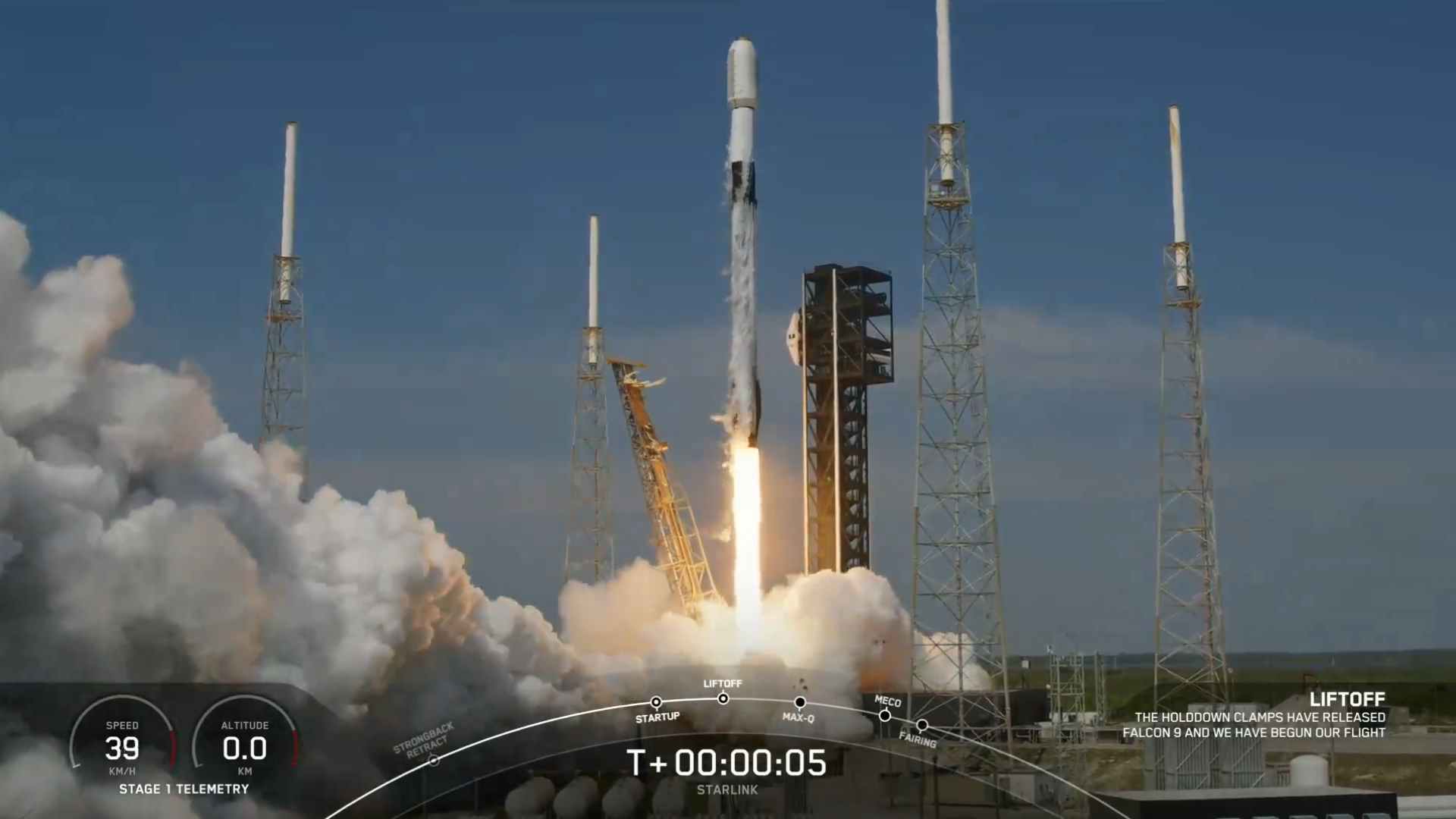SpaceX launched yet another batch of its Starlink internet satellites from Florida on Tuesday morning (May 28).
A Falcon 9 rocket lofted 23 Starlink spacecraft from Cape Canaveral Space Force Station on Tuesday at 10:24 a.m. EDT (1424 GMT) during a four-hour window beginning at 7:30 a.m. EDT (1130 GMT).
The launch had originally been targeted for Monday (May 27), but SpaceX stood down from the attempt.
Related: Starlink satellite train: How to see and track it in the night sky

The Falcon 9's first stage came back to Earth about 8 minutes after launch, landing on the droneship A Shortfall of Gravitas in the Atlantic Ocean.
It was the 10th launch and landing for this particular first stage, according to a SpaceX mission description. Six of its nine flights to date have been Starlink missions.
The Falcon 9's upper stage continued carrying the 23 Starlink satellites to low Earth orbit, where they were expected to be deployed about 65 minutes after liftoff.
Get the Space.com Newsletter
Breaking space news, the latest updates on rocket launches, skywatching events and more!
Tuesday's launch was SpaceX's 53rd orbital mission of the year already, and its 37th of 2024 dedicated to building out the Starlink megaconstellation, which currently consists of nearly 6,000 operational satellites.
And there are many more flights to come: SpaceX plans to launch about 150 missions this year, company representatives have said.
Join our Space Forums to keep talking space on the latest missions, night sky and more! And if you have a news tip, correction or comment, let us know at: community@space.com.

Michael Wall is a Senior Space Writer with Space.com and joined the team in 2010. He primarily covers exoplanets, spaceflight and military space, but has been known to dabble in the space art beat. His book about the search for alien life, "Out There," was published on Nov. 13, 2018. Before becoming a science writer, Michael worked as a herpetologist and wildlife biologist. He has a Ph.D. in evolutionary biology from the University of Sydney, Australia, a bachelor's degree from the University of Arizona, and a graduate certificate in science writing from the University of California, Santa Cruz. To find out what his latest project is, you can follow Michael on Twitter.









